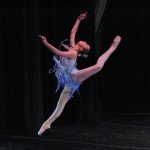SMPC Day 1: Session 2 (Singing Abilities)
Now, dear reader, this is the first conference where I have been asked to act as a session chair. In my small and silly way I find this rather exciting.
 You see, lots of important and interesting people are acting as session chairs and the idea that I get to be counted among them makes me smile. This, plus the fact that SMPC session chairs gets to wield a ping pong bat with one side reading ‘5 mins’ and one side ‘2 mins’ to help with the timing of talks – though I gather these are for show and not use!
You see, lots of important and interesting people are acting as session chairs and the idea that I get to be counted among them makes me smile. This, plus the fact that SMPC session chairs gets to wield a ping pong bat with one side reading ‘5 mins’ and one side ‘2 mins’ to help with the timing of talks – though I gather these are for show and not use!
I was given a session on singing to chair, which surprised me at first as this is not my field. But then I started to get intrigued by the possibilities of learning something new and hearing more about the international AIRS project (Advancing Interdisciplinary Research in Singing), a major collaborative research initiative of the social sciences and humanities research council of Canada.
The first speaker was Ana Luisa Santo (York University, Canada) who has an interdisciplinary research interest in singing abilities (she is a lovely singer too, as you will see from the video). Ana presented some work on her interest in singing in tune, from the viewpoint of a music educator as well as a psychologist.
Her study had two parts. In the first part she conducted interviews with 4 singing teachers and asked them about their experiences with out-of-tune students. Common themes from her analysis included the students’ difficulties in hearing differences between pitches, trial and error methods of teaching (partly due to what teaching felt was a lack of access to ‘readable’ research) and a strong belief that anyone can be taught to sing.
 In the second part she carried out an experiment looking at visuospatial processing abilities in amusics, people who were poor singers (but not amusics), and controls. She did a selection of 5 tests and found that while amusics do not have general visuospatial difficulties, they do show lower performance on visual working memory tasks.
In the second part she carried out an experiment looking at visuospatial processing abilities in amusics, people who were poor singers (but not amusics), and controls. She did a selection of 5 tests and found that while amusics do not have general visuospatial difficulties, they do show lower performance on visual working memory tasks.
I hope that Ana’s research will provide an impetus for bridging the gap between music education researchers and music educators, a gap which can at times be a too wide for both.
The next talk was by Steven Demorest (University of Washington) and represented an interesting collaboration with Peter Pfordresher (University of Buffalo). They had combined some of their data on singing ability in the general population to ask the question of whether singing accuracy ‘naturally’ improves with age.
 They compared singing in adults and young children, looking at singing single notes, intervals and tone patterns. They also did a really interesting thing in comparing the rating of a human singing judge to that of a computer program.
They compared singing in adults and young children, looking at singing single notes, intervals and tone patterns. They also did a really interesting thing in comparing the rating of a human singing judge to that of a computer program.
Turns out that humans are more forgiving when rating singing compared to a computer but there is an extremely high correlation between the two. So, if a computer says you are a bad singer then a human is likely to think the same thing! Also, while they found a difference between kids and adults singing but it was much smaller than I expected. Essentially there seemed little improvement.
These researchers are aiming towards a unified approach to assessing singing accuracy and a more global and integrated picture of how musical skill develops ‘naturally’ across the lifespan.
The third talk was by Helga Gudmundsdottir (University of Iceland) who has been working with the AIRS project and evaluation children’s singing in both Canada and Iceland. She pointed out the limitations of present singing assessments protocols, focusing as they do on factors such as pitch accuracy which is not typically the goal of young children.
 She likened the habit of judging a child’s singing to that of a trained singer with the idea of comparing a child’s motor skills to that of a ballet dancer – an analogy which neatly pointed out the questionable nature of the contrast.
She likened the habit of judging a child’s singing to that of a trained singer with the idea of comparing a child’s motor skills to that of a ballet dancer – an analogy which neatly pointed out the questionable nature of the contrast.
Helga also questioned models of singing development that prioritize the initial learning of words (word primacy). From her extensive research she has seen that musical contour often precedes any notion of word accuracy in child singing.
Finally there was a talk by Dawn Merrett (University of Melbourne, Australia) on the effects of distributed and massed singing practice on stroke patients. By ‘distributed’ Dawn meant spreading out the practice, in her case 20 minutes, 5 times a week. By ‘massed’ she meant bulking all the training in one intensive session, as is common in neurorehabilitation, of 100 minutes, once a week (both lessons were DVD based).
 Dawn provided data in support of the distributed practice model, showing that you get general improvements with both interventions but significantly better pitch discrimination with spaced out practice sessions. She also presented some data showing significant improvements in mood and energy of participants after rehabilitation but advised caution here given the small real improvements she observed.
Dawn provided data in support of the distributed practice model, showing that you get general improvements with both interventions but significantly better pitch discrimination with spaced out practice sessions. She also presented some data showing significant improvements in mood and energy of participants after rehabilitation but advised caution here given the small real improvements she observed.
Overall, I learned a lot from this session. I saw how singing is really an area where we need improvements in our understanding of how to assess ability, and better communication between interested disciplines to feed directly into education. Projects like AIRS are a really good step forward in this direction.
One Comment
Buck
Thanks for blogging this conference – so close to me, yet so far 🙁
I found it very interesting that computers and humans can judge singing ability similarly. I wonder who designed the protocols? Even when I was a child I couldn’t sing with good pitch control. I knew when I was off, but I couldn’t correct it quickly enough to erase the error completely. Now, as an adult, I can ‘correct’ before the note emerges (if that makes sense) although I’m finding that as I get older more and more off-pitch notes emerge.
Thank you so much for the link to Ms Santos’ recital. Marvelous!